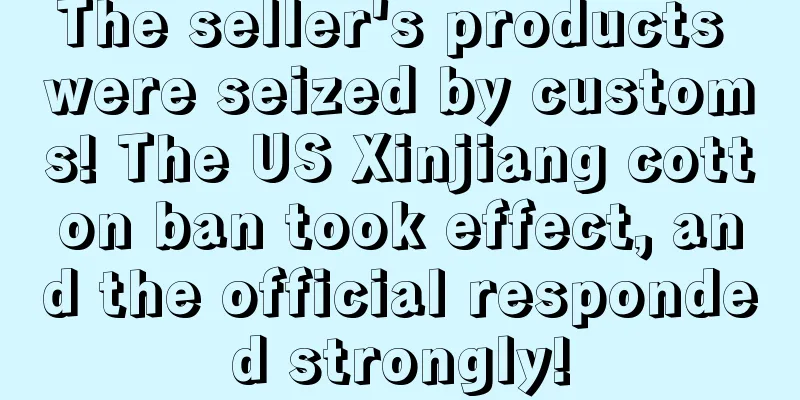[Amazon ranking algorithm revealed] Why can search and add to cart improve keyword rankings?
![[Amazon ranking algorithm revealed] Why can search and add to cart improve keyword rankings?](/upload/images/67e77b825f7f9.webp)
|
Let’s think about a few questions first: 1. Why can advertising improve keyword rankings? 2. Why can fake orders improve keyword rankings? 3. Can the words that are not included in the listing be ranked? 4. Why can the keyword homepage service achieve the goal of getting on the homepage? In fact, for a new product, how does Amazon know whether my product meets the needs of users? Here are two algorithms: 1. Static correlation-cold start When a new product is launched, Amazon will extract relevant keywords from the listing, calculate the frequency of words, and calculate the keyword weight of the ASIN. The keywords come from the Title, Search Term and Bullet Point, and the category defined by the seller when editing the listing. The keyword weight is determined by the time the listing was first launched (new product period), the keyword matching degree, the keyword distribution position, and the keyword repetition. Based on static relevance: We can repeat keywords in as many places, layouts, and as many times as possible under reasonable circumstances! 2. Dynamic correlation--the influence of user behavior When the static correlations of keywords for two identical listings are exactly the same, how does Amazon further determine which product is more relevant to the keywords? What is dynamic relevance - the relevance of keywords and products based on the following user behaviors. • Search Clicks + CTR • Add-on purchase quantity + Add-on purchase rate • Add wishlist + add heart rate • Purchase volume + purchase rate • Number of reviews + ratings • Return rate The above behaviors can increase the relevance of keywords and ASIN, which can well explain the questions at the beginning of the article. Bonus points for fake orders: search, click, add to cart, purchase, high rating, etc. -- the most effective and direct Advertising bonus items: search, click, add to cart, purchase, (evaluation) -- the effect is second (because the advertising conversion rate is low) Keyword homepage services: search, click, add to cart - the effect is second to none (no conversion) Note: The above factors have different proportions in the whole site, and the purchase weight ratio is much higher than others. Therefore, searching, clicking, adding to cart, and adding to wishlist are definitely beneficial to relevance. The reason why the effect is not so good is because no transactions are generated. So how should we improve our existing keyword rankings (relevance)? 1. Excellent and reasonable keyword layout skills. 2. Reasonable search, click, add to cart, add to wish list 3. Specify keyword advertising and specify keyword order brushing. If you stick to the above three points, your keyword ranking will definitely be far ahead! Note: Improving keyword ranking is a long process. The ranking update time of each Amazon site is different and keeps changing. Recently, it takes 3-5 days for the Japanese site and 8-10 days for the US site. In addition, it does not mean that every operation can be effective in the short term. Optimization itself is a long-term accumulation process! END |
<<: How to grasp the rhythm of Amazon operations and what to do at each stage
>>: Product Development - How to Find Samples and Screen Suppliers (Dry Goods Sharing!)
Recommend
The storage capacity is updated frequently? It suddenly drops to negative numbers and then soars to nearly 10 million!
There have been some strange trends in the cross-b...
How to use Amazon Brand Analytics to make your products appear in "Frequently Bought Together"?
Brand Analytics is a data analysis tool provided ...
What is Amazon Wholesale Marketplace? Amazon Wholesale Marketplace Review
"Amazon Bulk Supply Store" is an invitat...
What is Shenzhen Haotong Tiancheng International Logistics Co., Ltd.? Shenzhen Haotong Tiancheng International Logistics Co., Ltd. Review
Shenzhen Haotong Tiancheng International Logistics...
CPSC recalls 20,800 Giant bicycles due to loose handlebars, posing a risk of falling!
It is learned that on January 12, CPSC announced t...
What is Byju's? Byju's Review
Byju's is an Indian K12 online education servi...
A complete guide to preventing fraud for Amazon sellers
There are endless reports about Amazon fraud. In ...
Amazon scans accounts again! Sellers: Three warnings may result in store closure
From April 3rd to April 4th, many Amazon sellers f...
Amazon's Misconceptions about Hot Products and Its Road to Transformation
My dears👋, today let’s talk about Amazon’s idea of...
With annual sales of nearly 10 billion on Amazon, Anker Innovations’ 23-year report card is released!
It is learned that on April 25, Anker Innovations ...
What is a Super Store Manager? Super Store Manager Review
Super Store Manager is developed and operated by H...
Amazon's major loophole fraud case! The fraud amount is as high as 19 million US dollars!
Strange things happen every year, but this year th...
What is GDPR (General Data Protection Regulation)? GDPR (General Data Protection Regulation) Review
The General Data Protection Regulation (GDPR) is a...
What is Meesho? Meesho Review
Meesho is an Indian social media e-commerce platfo...









